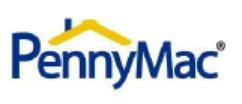Item 7A. Quantitative and Qualitative Disclosures about Market Risk, page 65
3. | We note your disclosure that you use derivative financial instruments acquired with the intention of moderating the risk that changes in market interest rates will result in unfavorable changes in the fair value of your IRLCs, inventory of mortgage loans held for sale and MSRs. We also note your disclosure in slide 14 of your March 31, 2020 Earnings Report included in your Form 8-K filed on May 7, 2020 that your “utilizing of option coverage for significant movement in rates provided substantial benefit in 1Q20.” Please revise future filings to more comprehensively describe the objectives of your hedging strategies, the context needed to understand those objectives and your strategies for achieving those objectives. Please refer to ASC 815-10-50-1A for guidance. Please provide us your proposed disclosure. |
Company’s Response to Question #3
In future filings, beginning with our Quarterly Report on Form 10-Q for the quarterly period ended September 30, 2020, we will enhance its Quantitative and Qualitative Disclosures about Market Risk as shown below:
Item 7A. Quantitative and Qualitative Disclosures About Market Risk
Market risk is the exposure to loss resulting from changes in interest rates, foreign currency exchange rates, commodity prices, equity prices, real estate values and other market-based risks. The primary market risks that we are exposed to are fair value risk, interest rate risk and prepayment risk.
Fair Value Risk
Our IRLCs, mortgage loans held for sale, MSRs, MSLs and ESS financing are reported at their fair values. The fair value of these assets fluctuates primarily due to changes in interest rates. The fair value risk we face is primarily attributable to interest rate risk and prepayment risk.
Interest Rate Risk
Interest rate risk is highly sensitive to many factors, including governmental monetary and tax policies, domestic and international economic and political considerations, and other factors beyond our control. Changes in interest rates affect both the fair value of, and interest income we earn from, our mortgage-related investments and our derivative financial instruments. This effect is most pronounced with fixed-rate mortgage assets. In general, rising interest rates negatively affect the fair value of our IRLCs, inventory of mortgage loans held for sale and ESS financing and positively affect the fair value of our MSRs.
Our operating results will depend, in part, on differences between the income from our investments and our financing costs. Presently our debt financing is based on a floating rate of interest calculated on a fixed spread over the relevant index, as determined by the particular financing arrangement.
